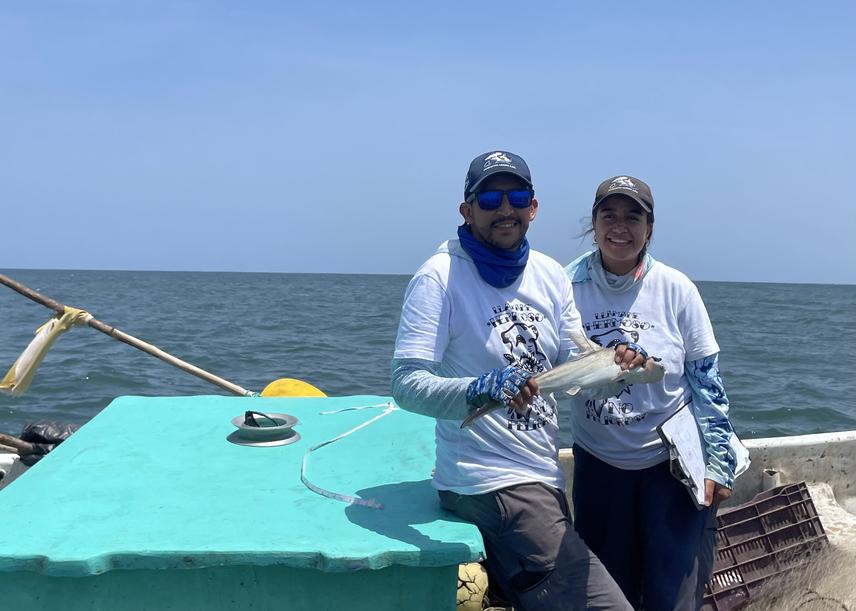Maria de Belen Chacón Paz
This project aims to protect essential coastal habitats for the Critically Endangered scalloped hammerhead shark (Sphyrna lewini) in Guatemala’s Pacific waters by identifying and delimiting key nursery areas through tagging and habitat use mapping in coastal communities. By collaborating with local fishers, it will promote sustainable fishing practices and generate crucial data to support the establishment of protected areas. The findings will strengthen efforts to implement a Fish Replenishment Zone (FRZ) and contribute to the National Plan of Action for Sharks, Rays, and Chimaeras (NPOA Guatemala), ensuring the long-term conservation of the species and essential habitats.

Team members with a scalloped hammerhead shark prior to release. © Fundación Mundo Azul.
Guatemala’s Pacific coast harbours ecologically rich habitats critical for marine biodiversity and local livelihoods. However, increasing threats from overfishing and habitat degradation have severely impacted shark populations, particularly the scalloped hammerhead, the most frequently landed shark in this region. The project focuses on the communities of Sipacate and Las Lisas, adjacent to known nursery habitats where neonates and juveniles develop. These areas play a vital role in the survival of the species.
Using a participatory approach, the project engages artisanal fishers in fieldwork through training workshops and collaborative tagging. Early-life scalloped hammerheads will be captured using hand and drum lines, measured, sexed, and tagged with external Floy tags before safe release. Recapture data will be collected by local monitors and fishers through routine landing monitoring, helping to assess habitat use and residency.
All capture and recapture locations will be recorded and mapped to identify and visualise critical nursery areas. These maps, along with project findings, will be shared through community workshops and submitted to national authorities to support the establishment of protected areas.
By combining scientific research with community engagement, the project aims to build a model of collaborative conservation that safeguards S. lewini while strengthening the resilience and sustainability of Guatemala’s coastal fisheries.
Header image: Release of a tagged scalloped hammerhead shark. © Fundación Mundo Azul.